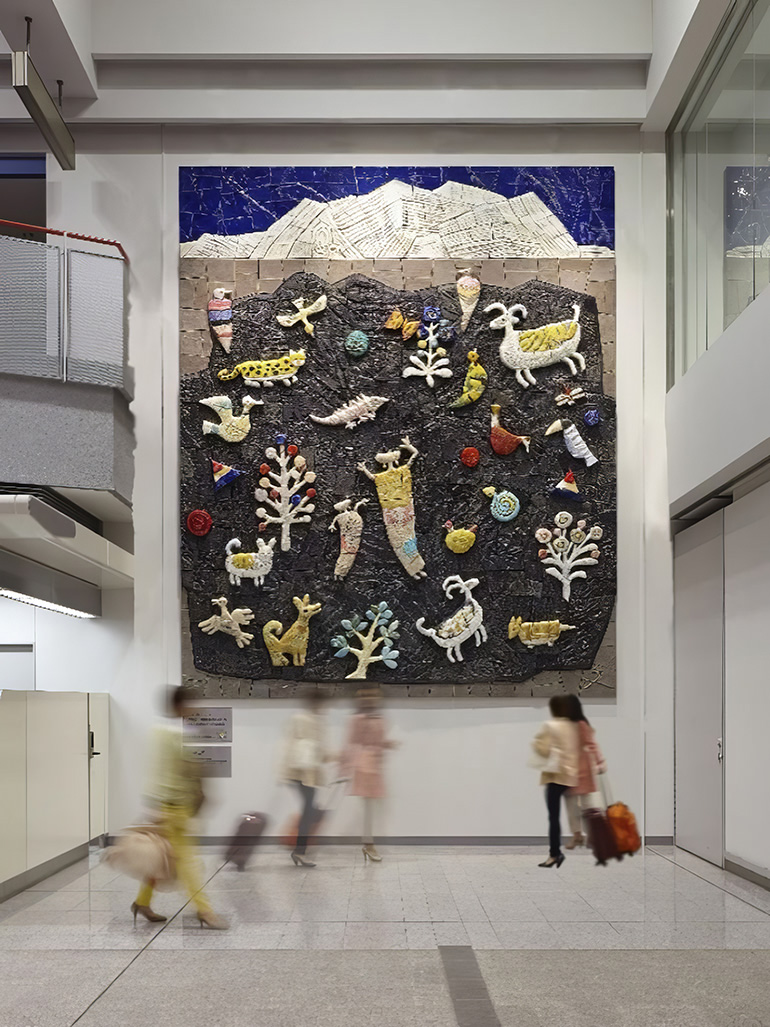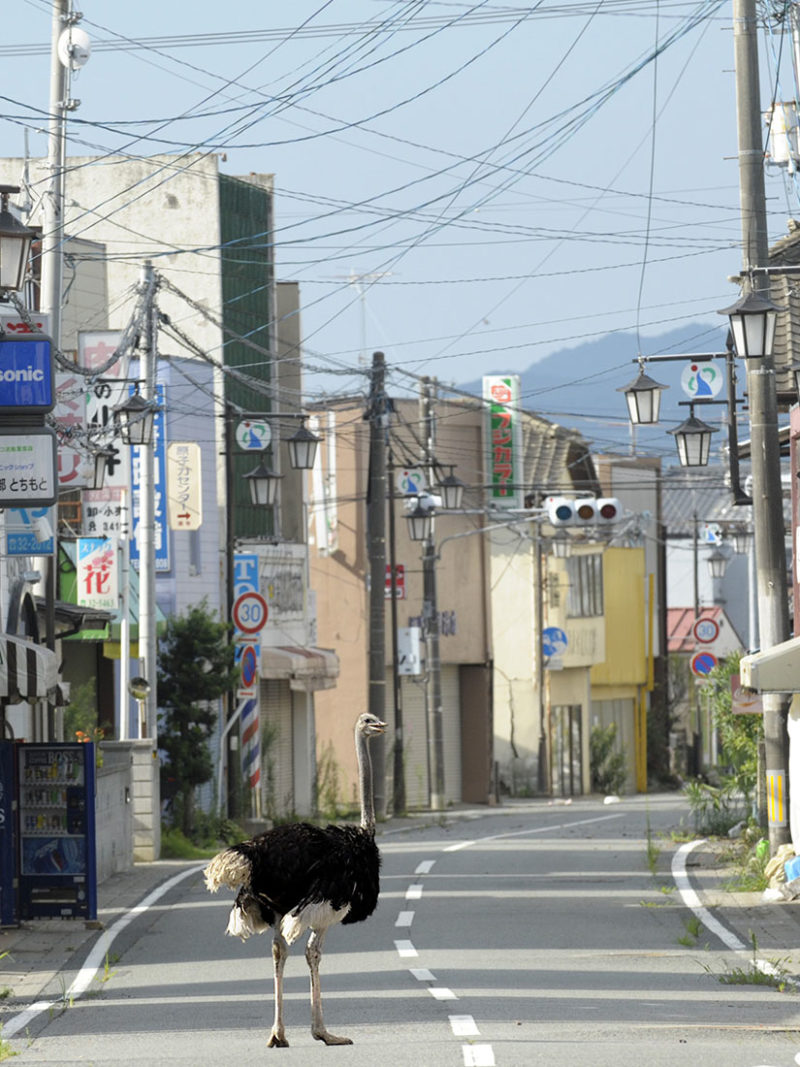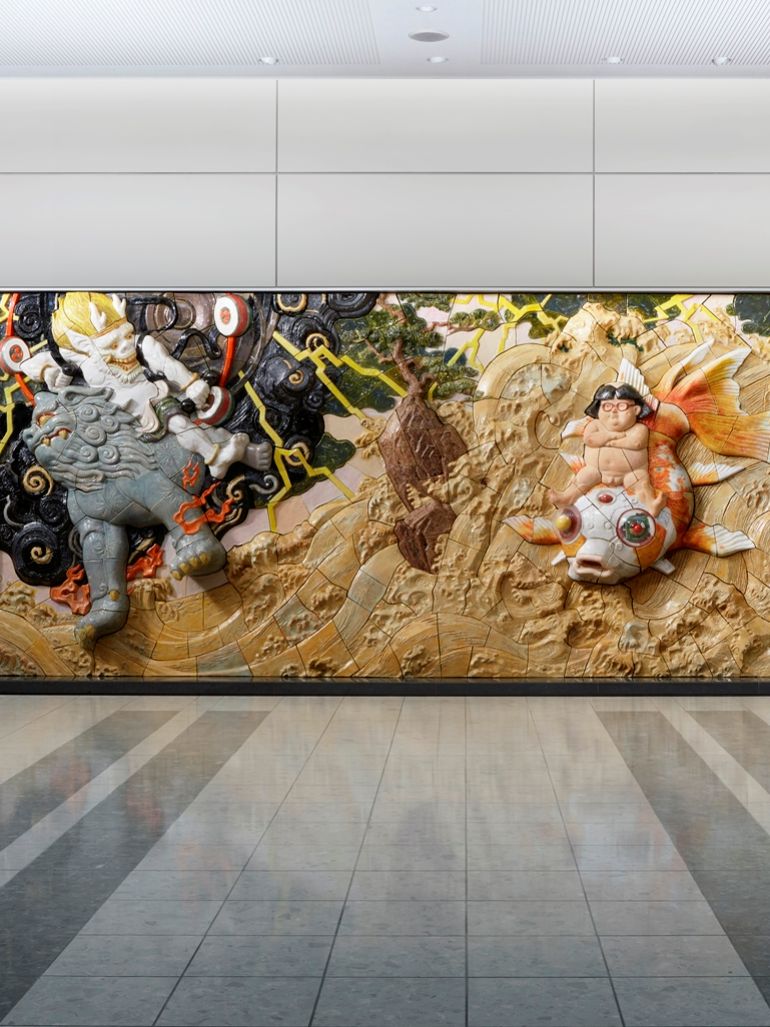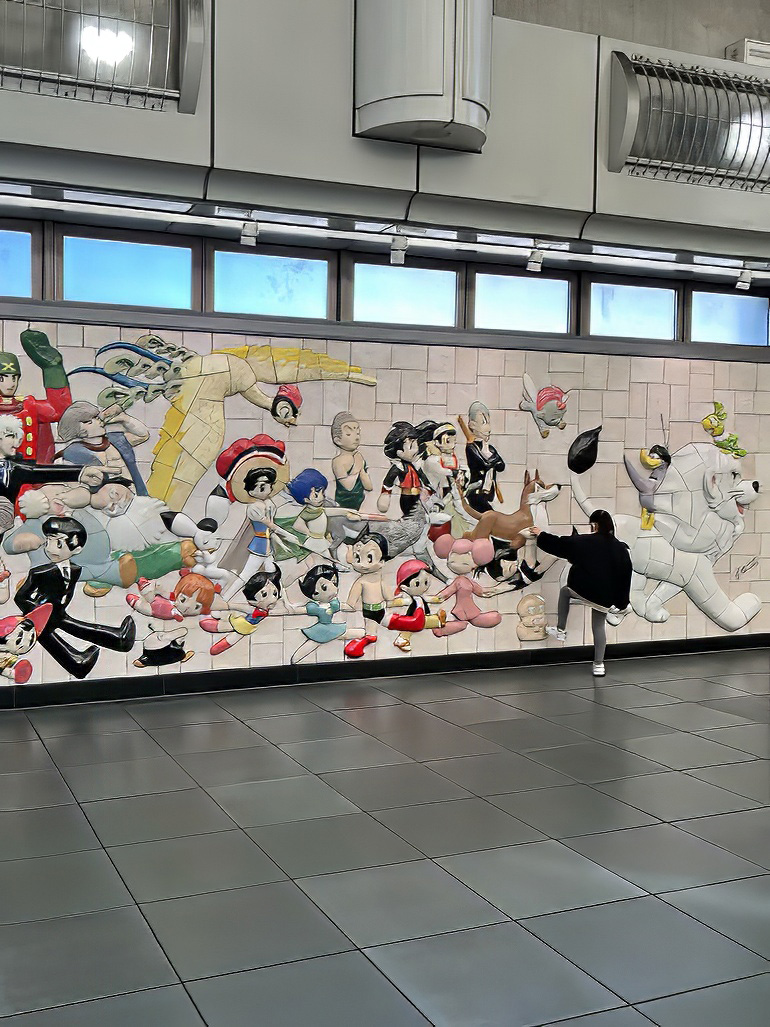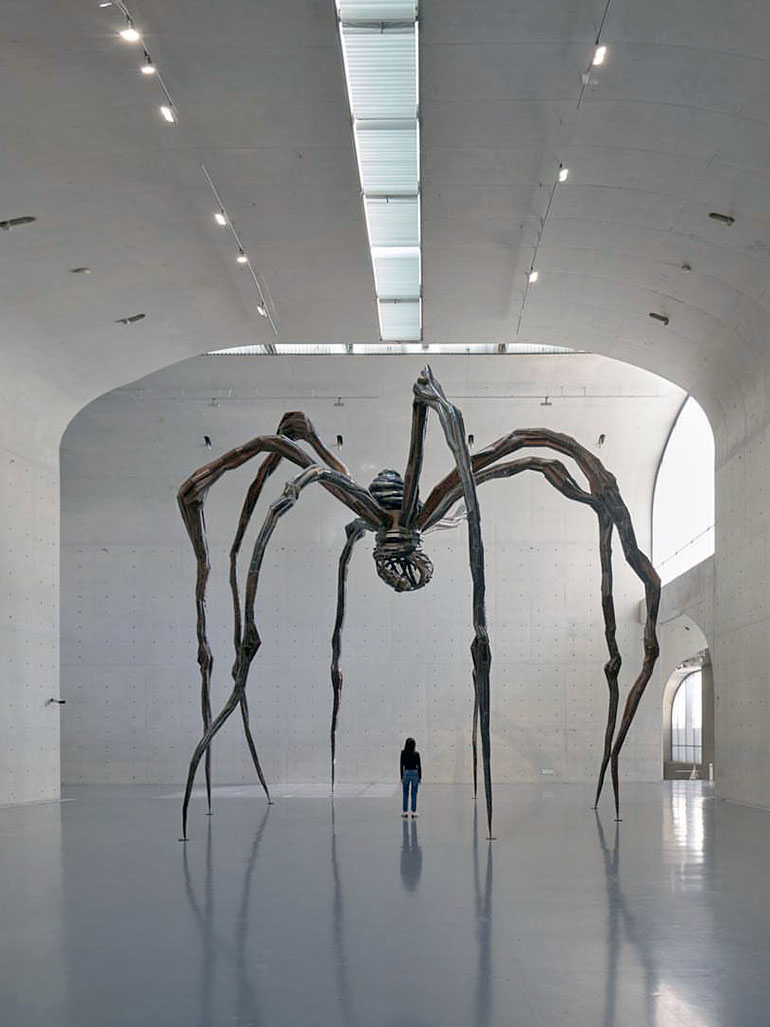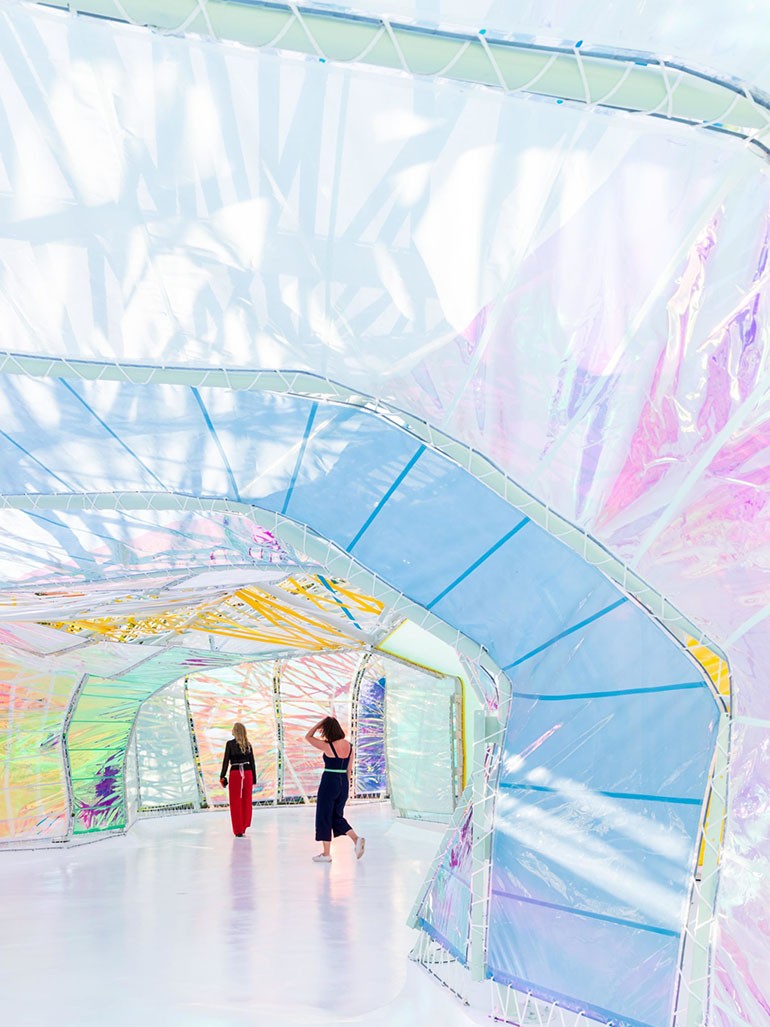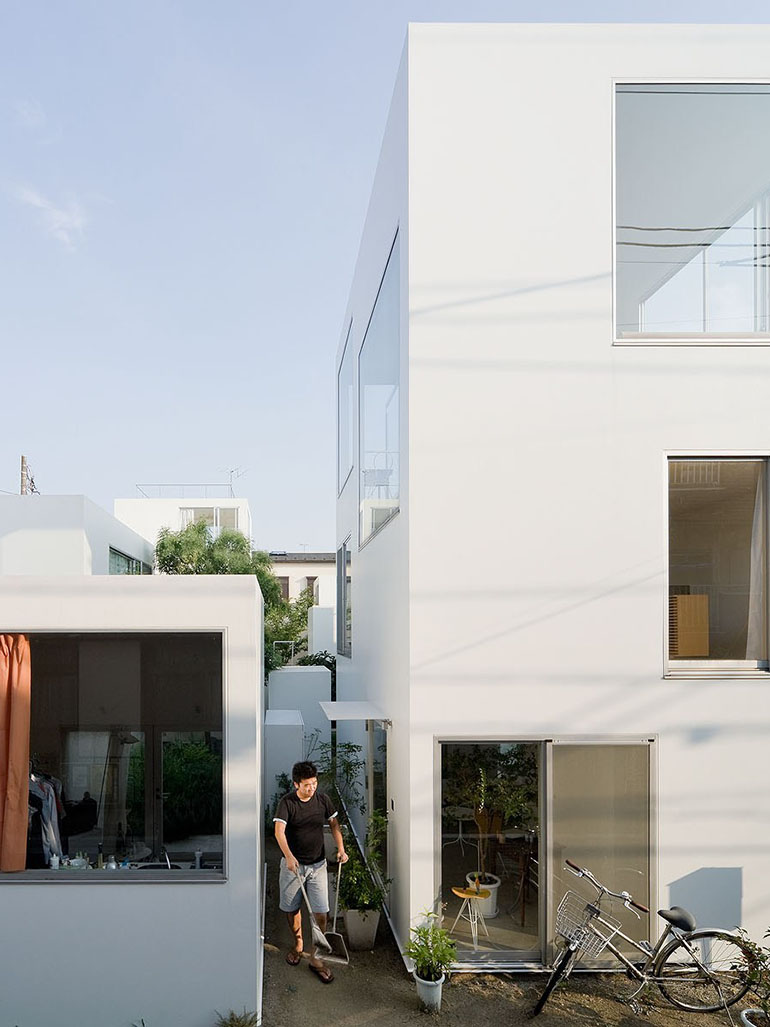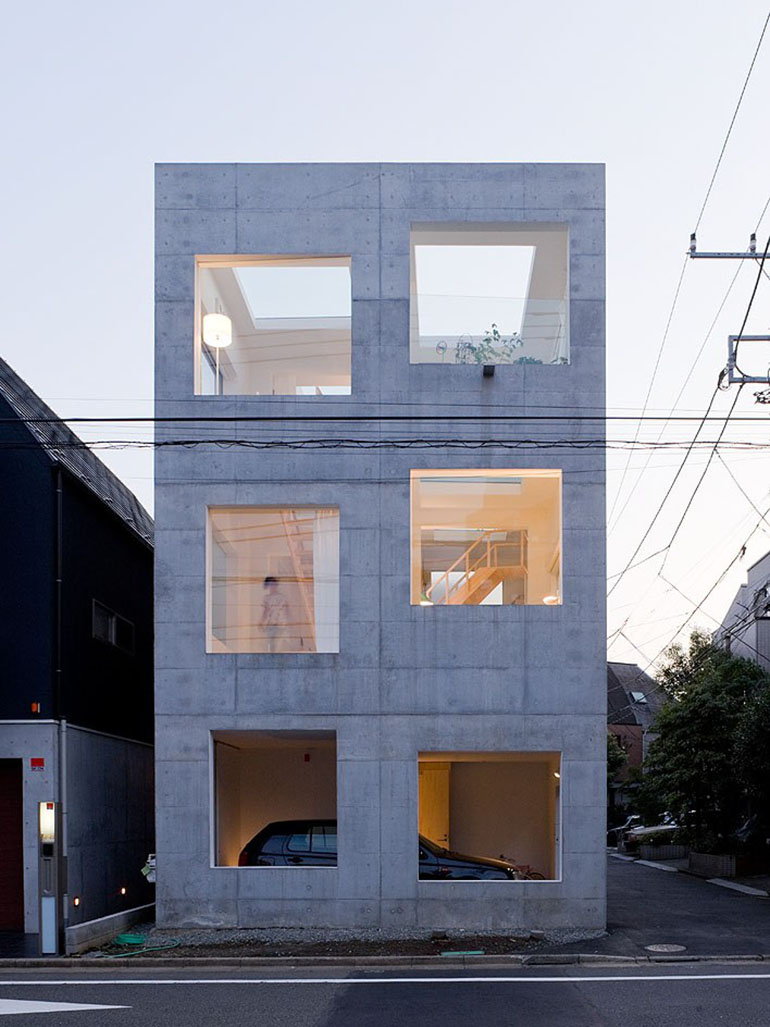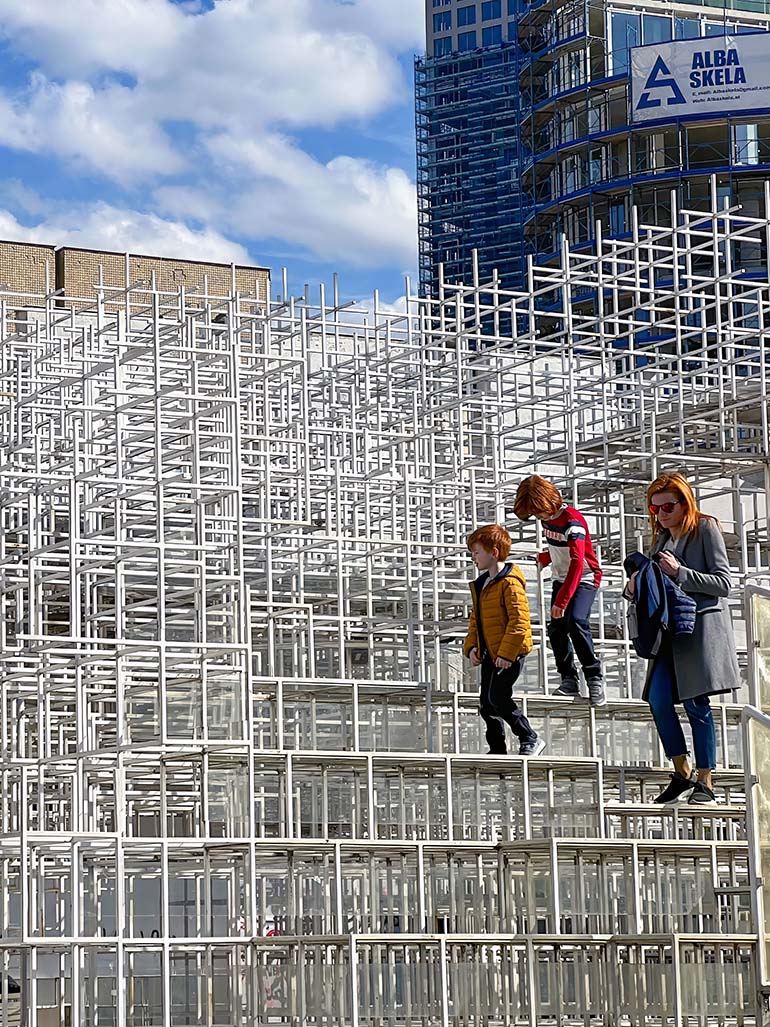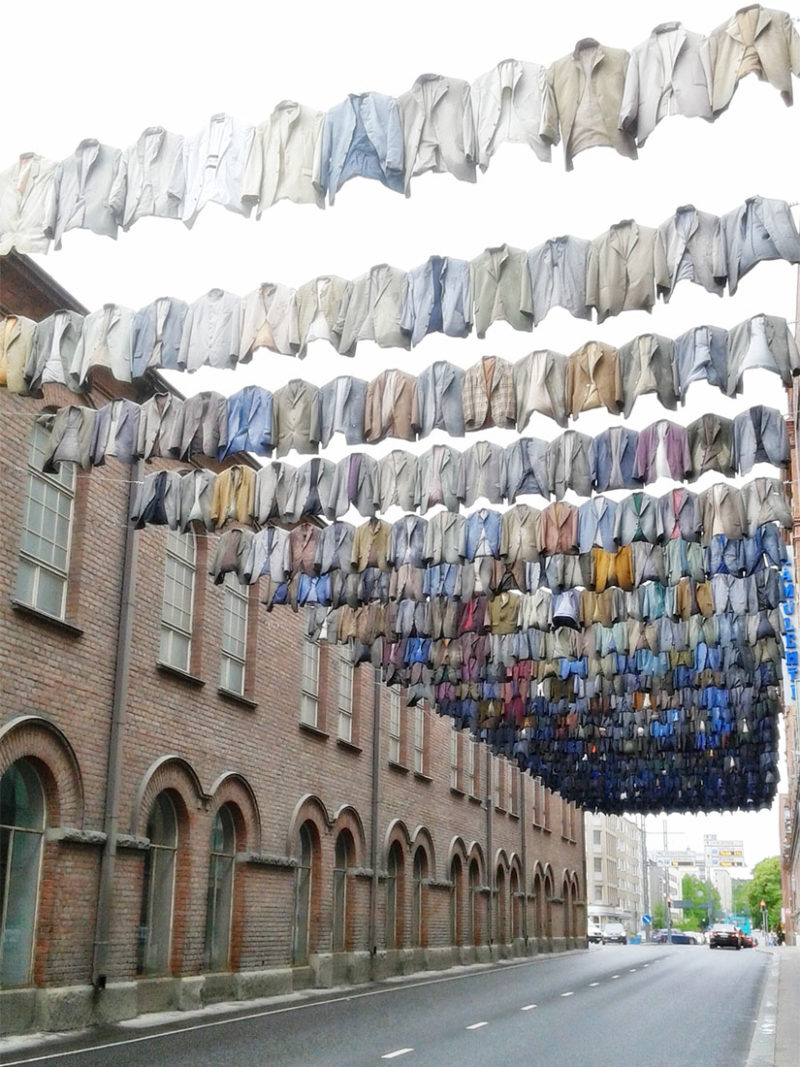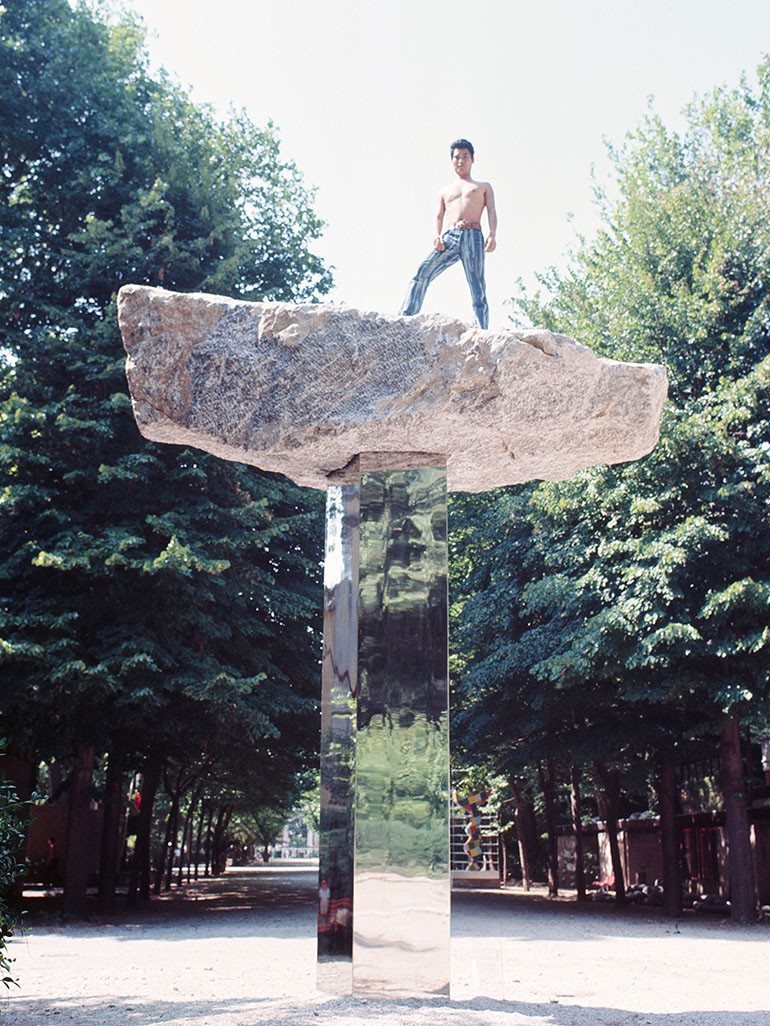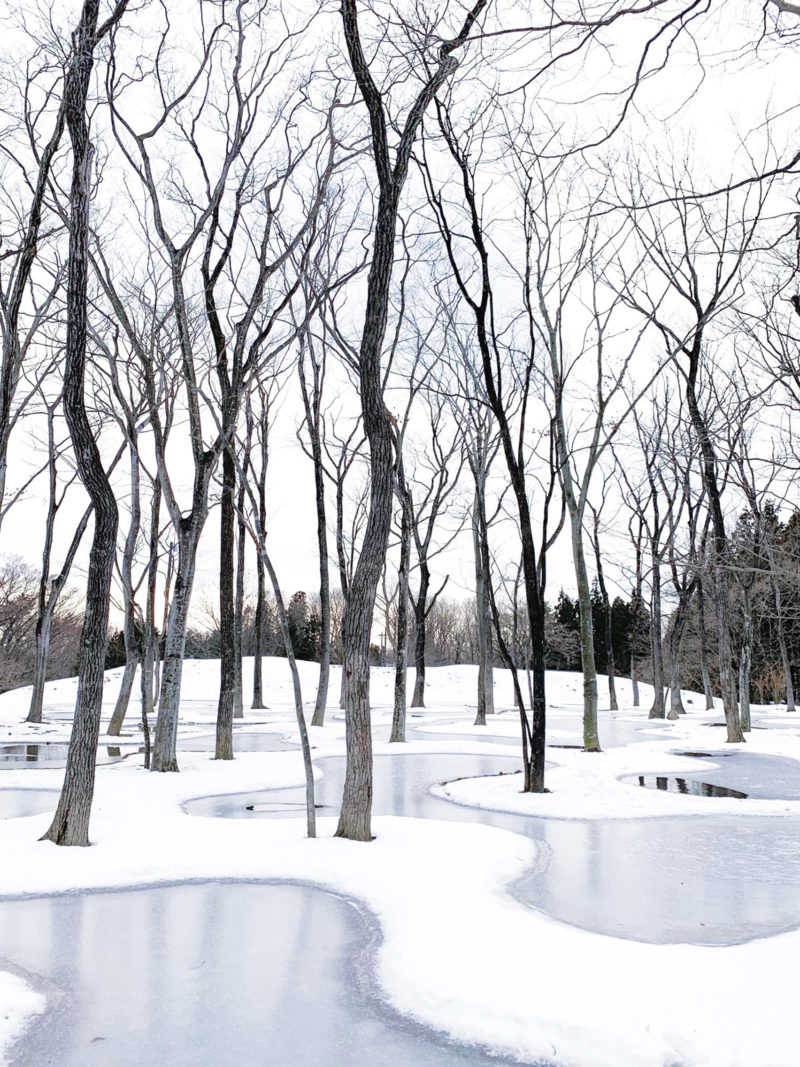
Permanently closed
Art Biotop Nasu, including the Water Garden designed by Junya Ishigami, permanently closed on November 30, 2023.
All associated facilities, such as the café and restaurant, are no longer in operation. Visitors cannot access the site.
Who is Junya Ishigami?
Junya Ishigami 1 is a Japanese architect. He was born in Kanagawa prefecture in 1974. In 2000, he obtained a master’s degree in architecture and planning at Tokyo National University of Fine Arts and Music. He had a short stint working at Kazuyo Sejima between 2000 and 2004 at SANAA 2.
Accomplishments
Right after leaving SANAA, he started his own company in 2004. In 2008 Ishigami displayed his solo exhibition in the Japanese pavilion at the 11th Venice Architecture Biennale. Ishigami became the youngest ever artist to receive the Architectural Institute of Japan Prize for the Kanagawa Institute of Technology KAIT Workshop in 2009.
A year later, he won Golden Lion for Best Project during the 12th Venice Architecture Biennale, before becoming an associate professor at Tohoku University. He was made the Kenzo Tange Design Critic in 2014 at the Harvard Graduate School of Design in the United States.
Water Garden
In 2019, Ishigami became Obel Award winner for his Biotop Water Garden project, located in the Nasu Mountains in the Tochigi Prefecture, Japan.
In this project, Ishigami blends architecture, landscape, and art. The Water Garden saw him import 300 trees from one island to another. He created an oasis made of small, shallow pools of water and twisting waterways, nestled among the variety of trees. All of them were carefully and precisely observed and examined to be sure of their ecological longevity.
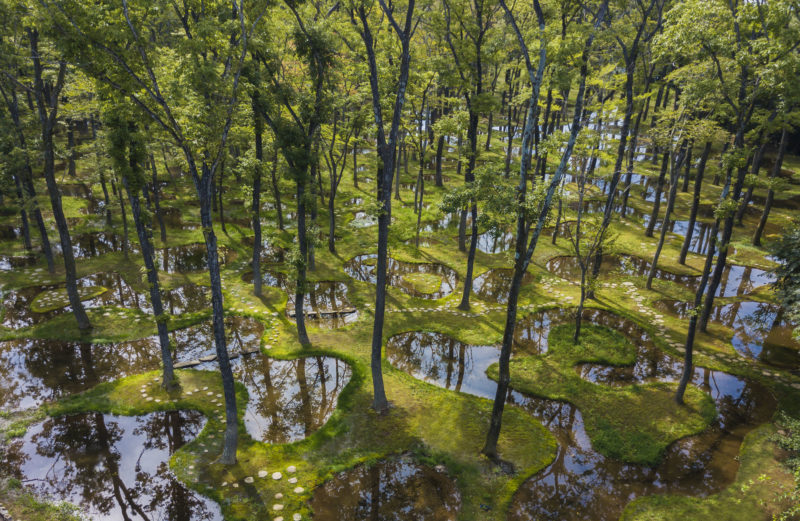
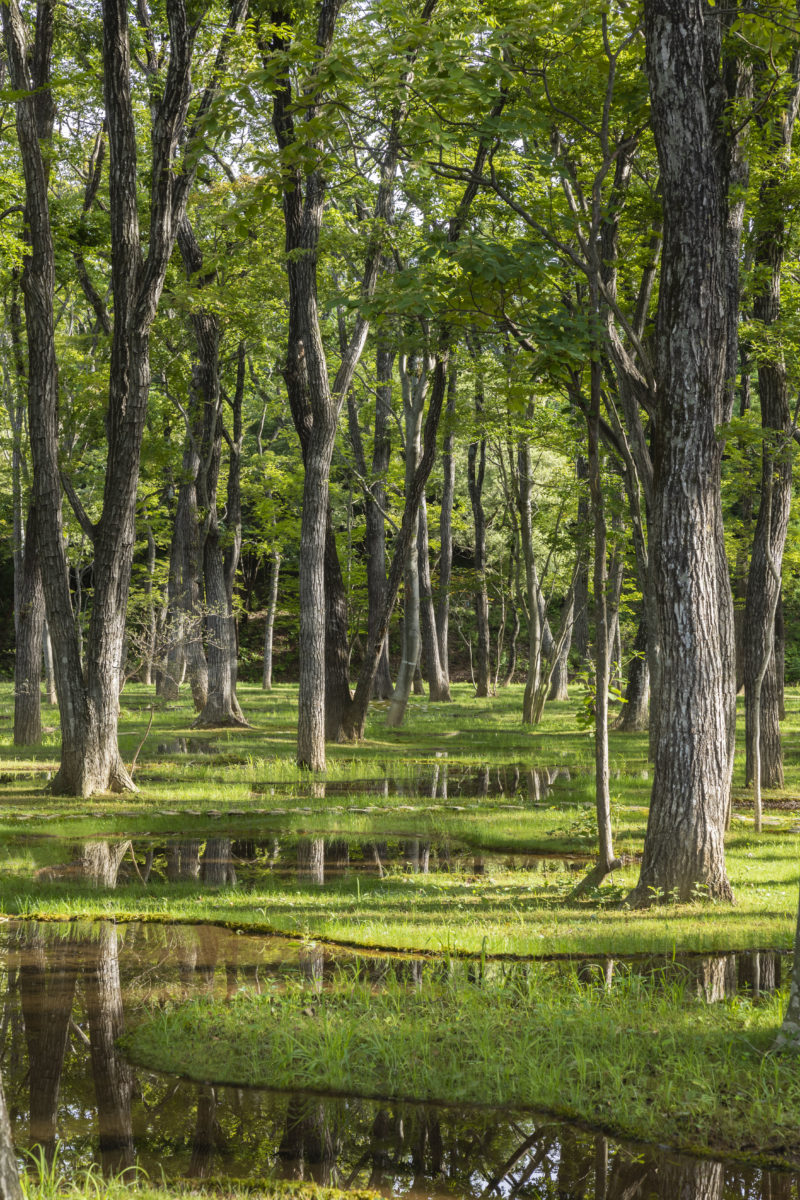
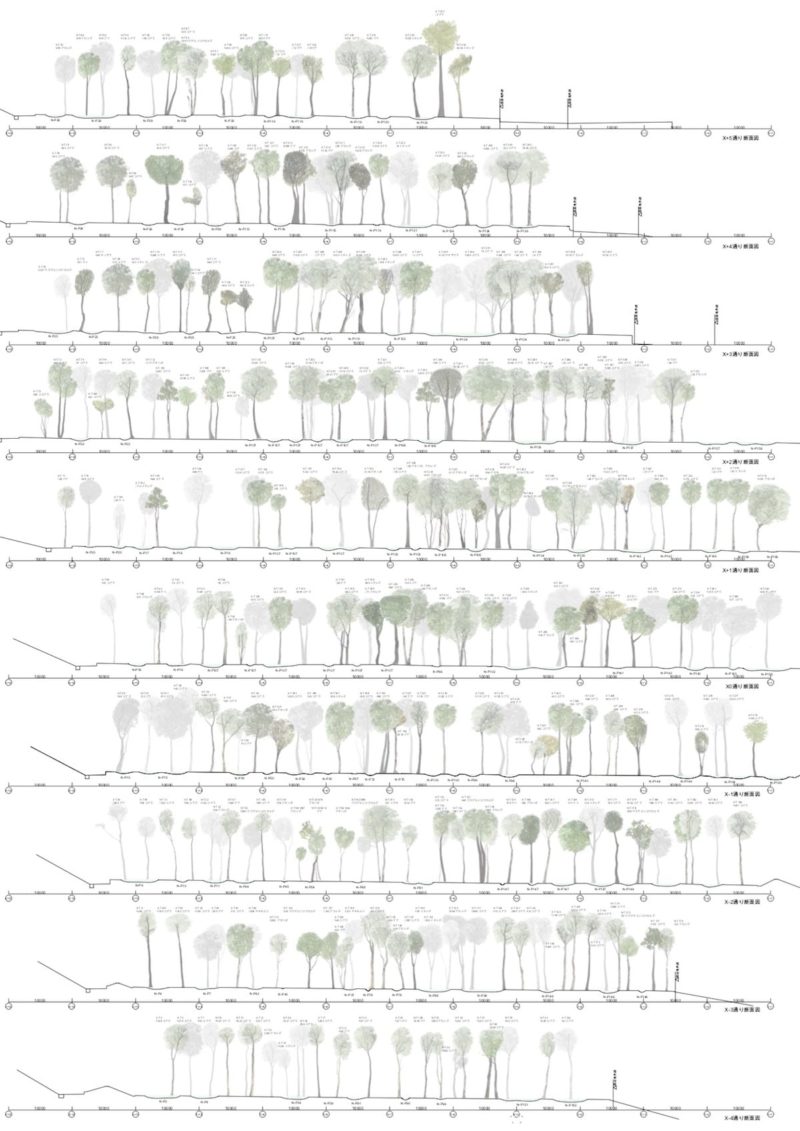
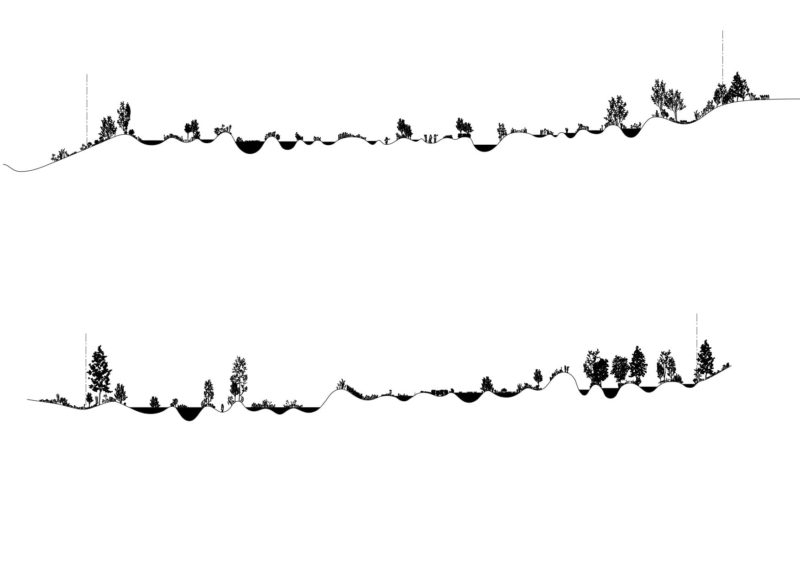
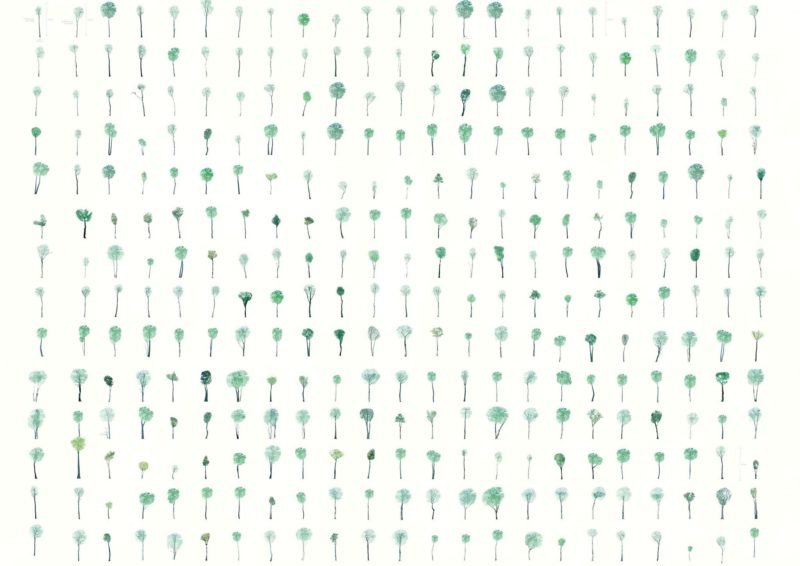
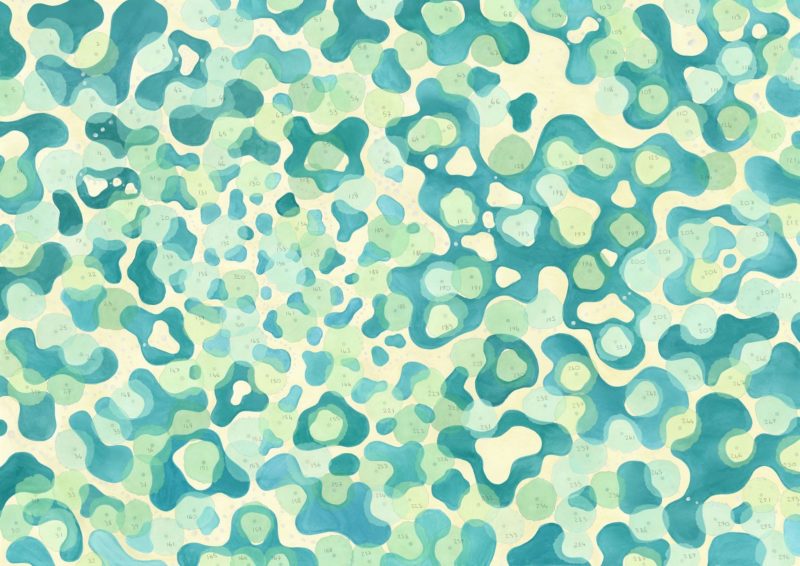
Background
After spending five years of constant research, thinking, and modeling, the construction of Water Garden was completed in 2018. At a construction site near the location of the project, many trees were supposed to be cut down. However, Ishigami proposed to transplant them from that site into the area of the Water Garden and to draw water from the sluice gate nearby to fill the numerous small ponds. And just like that, a new concept of overlapping and combining landscape gave rise to a unique and impressive scenery.
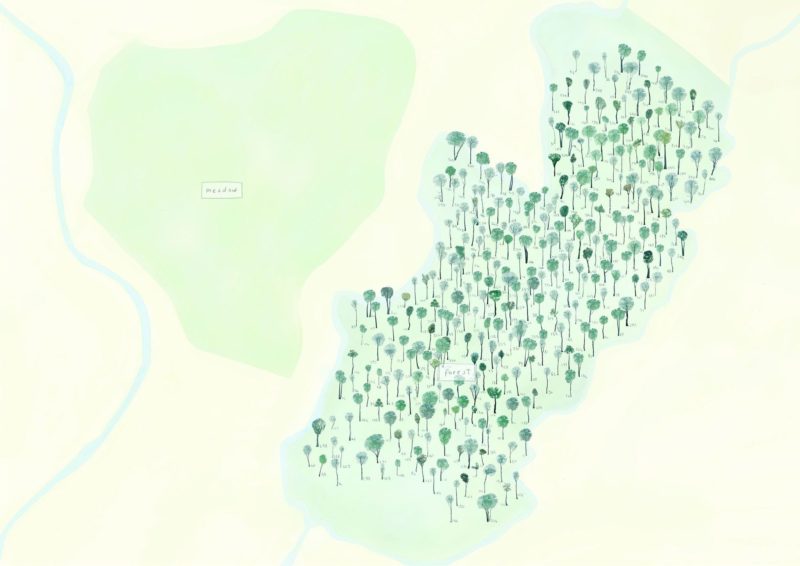
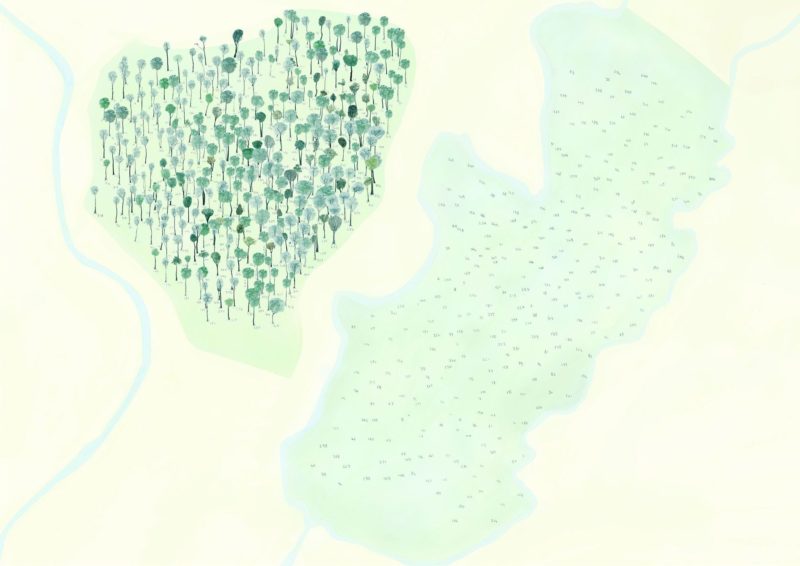
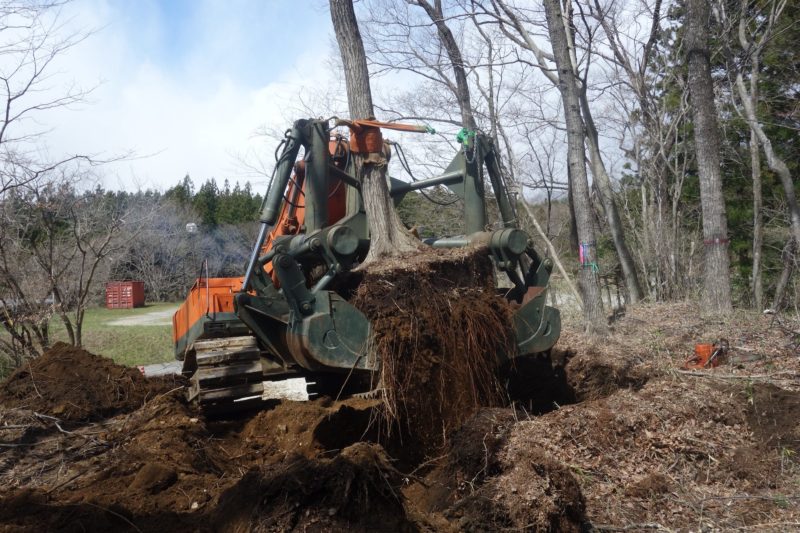
How the project was created
The entire habitat of the Water Garden, the trees and the ponds, is spread across the site’s length at a near-perfect density that is never even found in nature 3. Moss is laid out nicely to fill the spaces in the place between the trees and the ponds. All this was done without adding or discarding anything that was initially at the site, creating a hitherto unseen, new nature on the site.
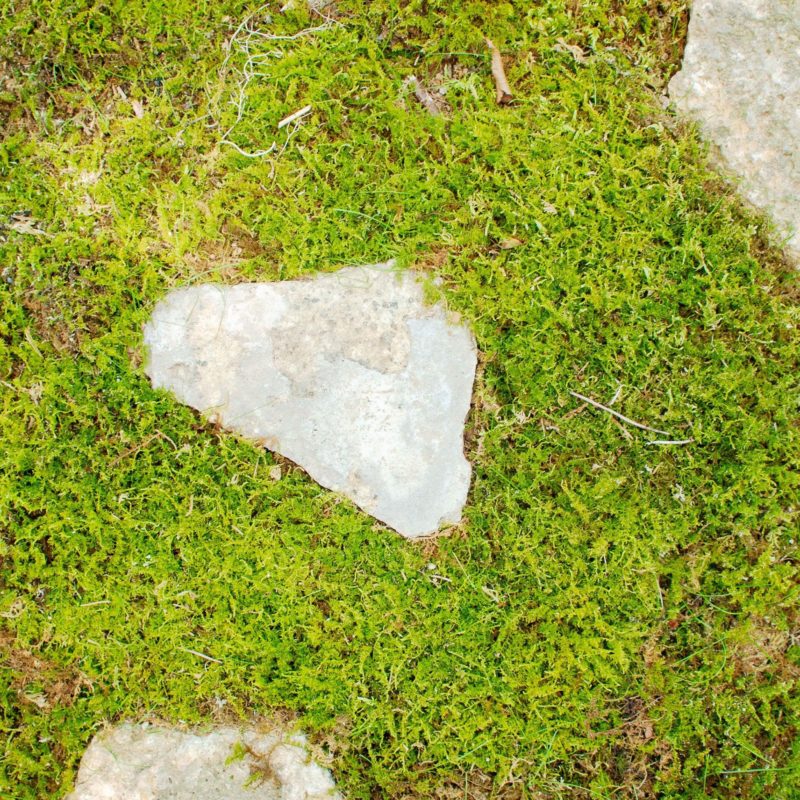
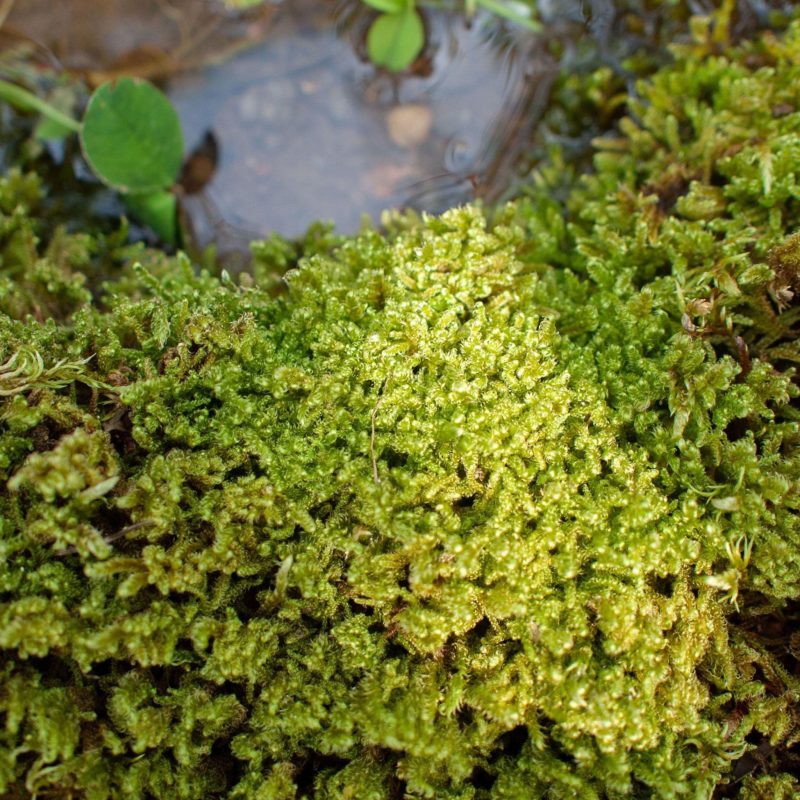
The landscape of the Water Garden was planned similarly to planning architecture. Extending the dimensions of the model and achieving the accuracy of the scene were realized simultaneously.
By arranging trees according to shapes and adding the ponds on the ground, the vague background of the forest was given a new outline and considered as a space with too much detail. Moving trees from the adjacent site to the location of the project and rearranging them already shifts the piece of the puzzle intentionally. The autonomy of each tree is created. The luminous spaces appear between the over 300 trees shapes while the 160 ponds are created among the trees.
Trees that makeup Water Garden are all deciduous trees, including canine, beech, and Quercus. Ideally, these trees cannot coexist like that with water so close. By applying a waterproofing system in the ponds, the artist creates a new coexistence and a new relationship.
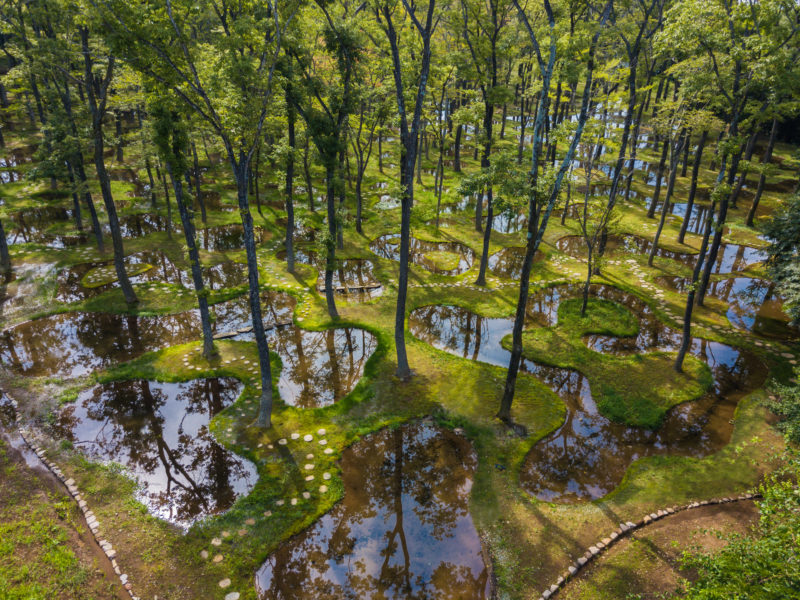
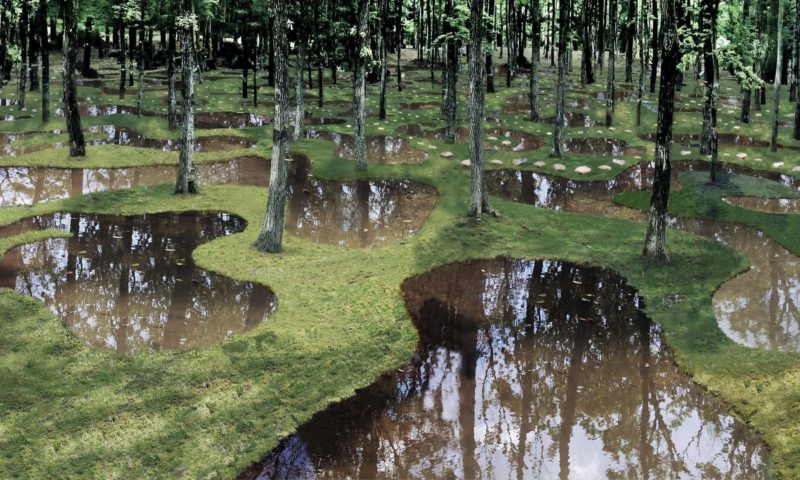
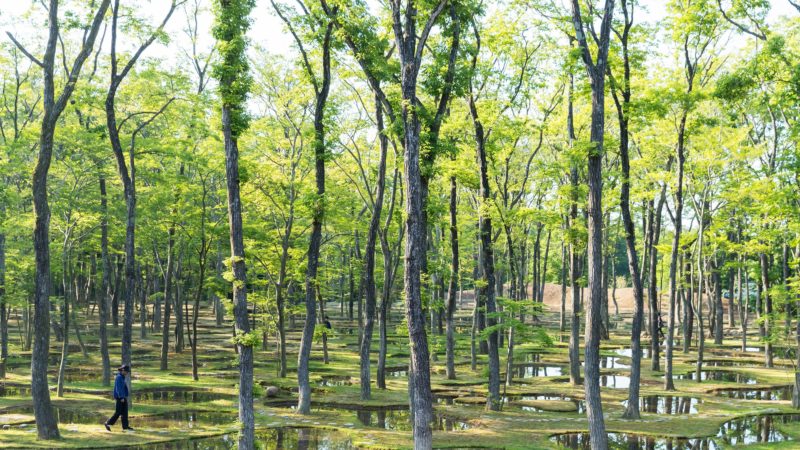
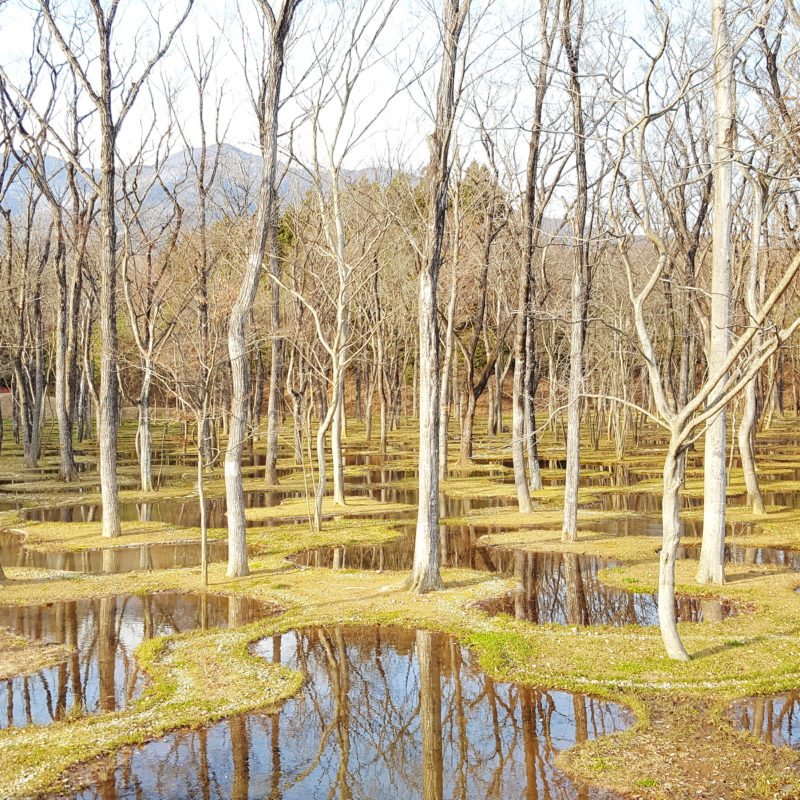
Inspiration
In a pluralistic culture that is hastily changing, Ishigami believes that people need to think freely and explore the countless possibilities of free architecture.
He states:
If architects and non-architects from all over, people all around the world would think about architecture more freely, if such scenery joined together to form a single space, the world would be all the richer for it. The different values in the world and types of architecture in the world would come closer together. Architecture would become more intimate than it is now.
Water Garden was intended to be a site for meditation and contemplation. However, the project didn’t fail to court controversy as allegations were made that Ishigami and Associates absconded paying its architecture interns.
While Water Garden is carefully modeled and depends on technological artifacts, the project is both extremely artificial as well as undeniably natural. It is a living entity that grows and transforms by its inherent dynamics.
Analysis
The Water Garden brought together landscapes that were in the surrounding but never met, mingled or mixed. The result is an ecosystem connected to the nearby existing irrigation channel with water flowing throughout continuously at varying rates.
According to Ishigami,
The primary objective of this project was to create a new form of nature as an extension of nature, as we now know it, the future of nature through the eyes of man. The site was originally heavily wooded before it was cleared for rice fields. Later, it became meadowlands. By maximizing the environmental potential of this land, we will create a new landscape that fuses ‘density’ and ‘relationship’ which do not coexist in nature.
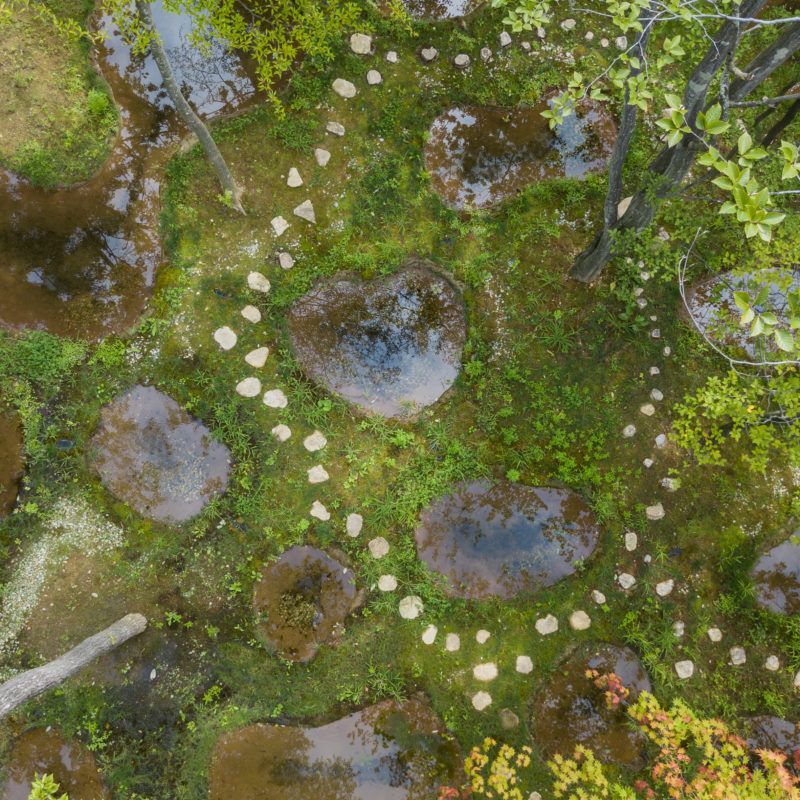
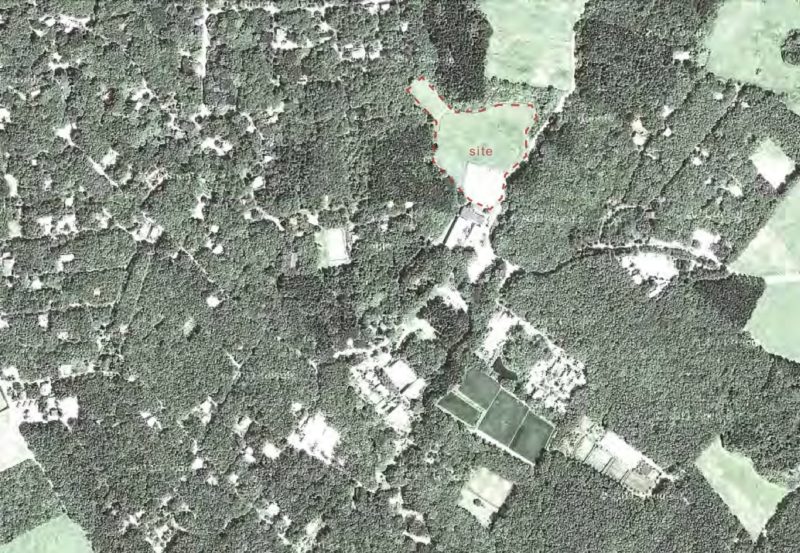
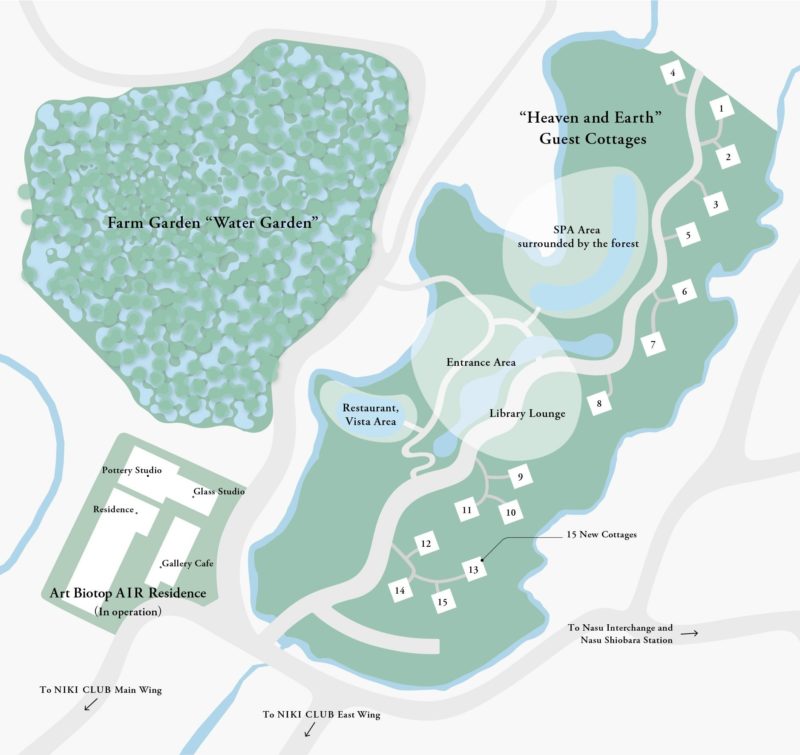
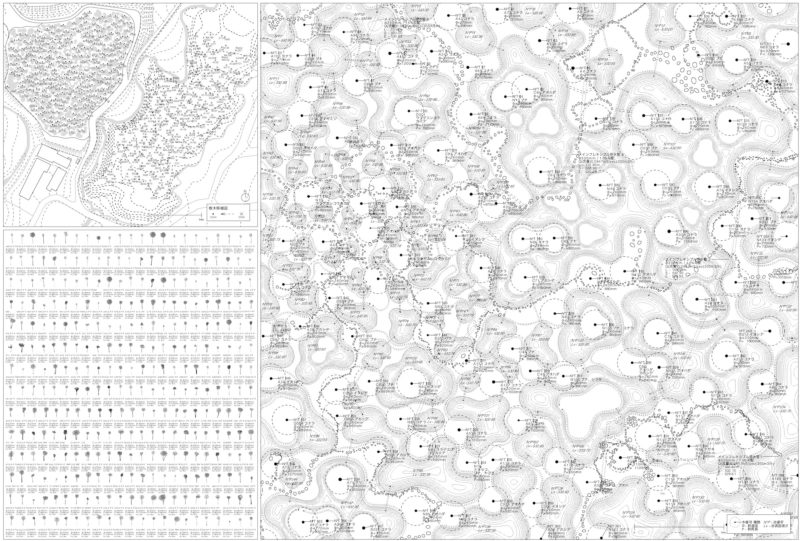
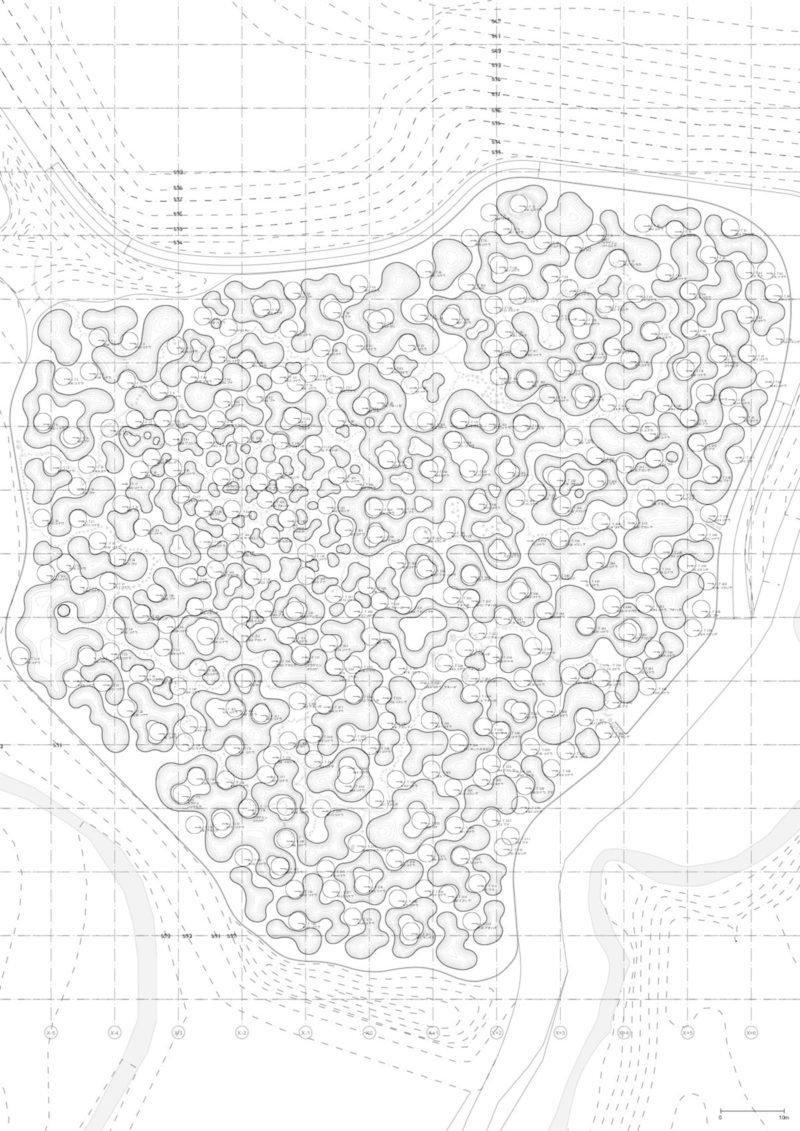
In his own words
Ishigami described the project at the ceremony as following,
This was a project that creates a new environment based on the idea of understanding a landscape as architecture. The idea was to superimpose the water and the environment created by the trees (based on) the historical fact that the site was (previously used as rice) paddy fields. It was essential to create a new natural environment only by re-constructing natural elements that used to exist at the place, including trees, mosses, grasses, stones, water, and soil.
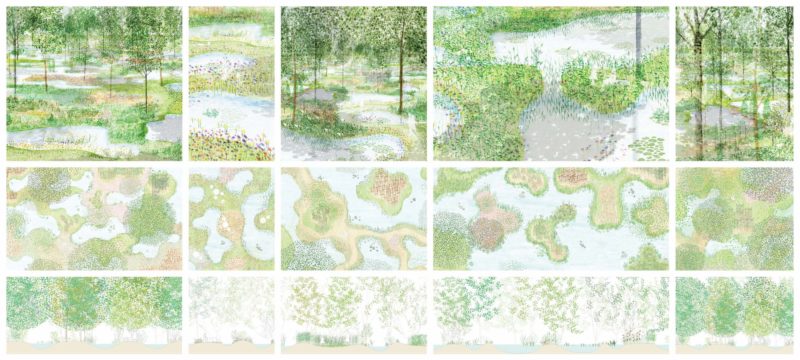
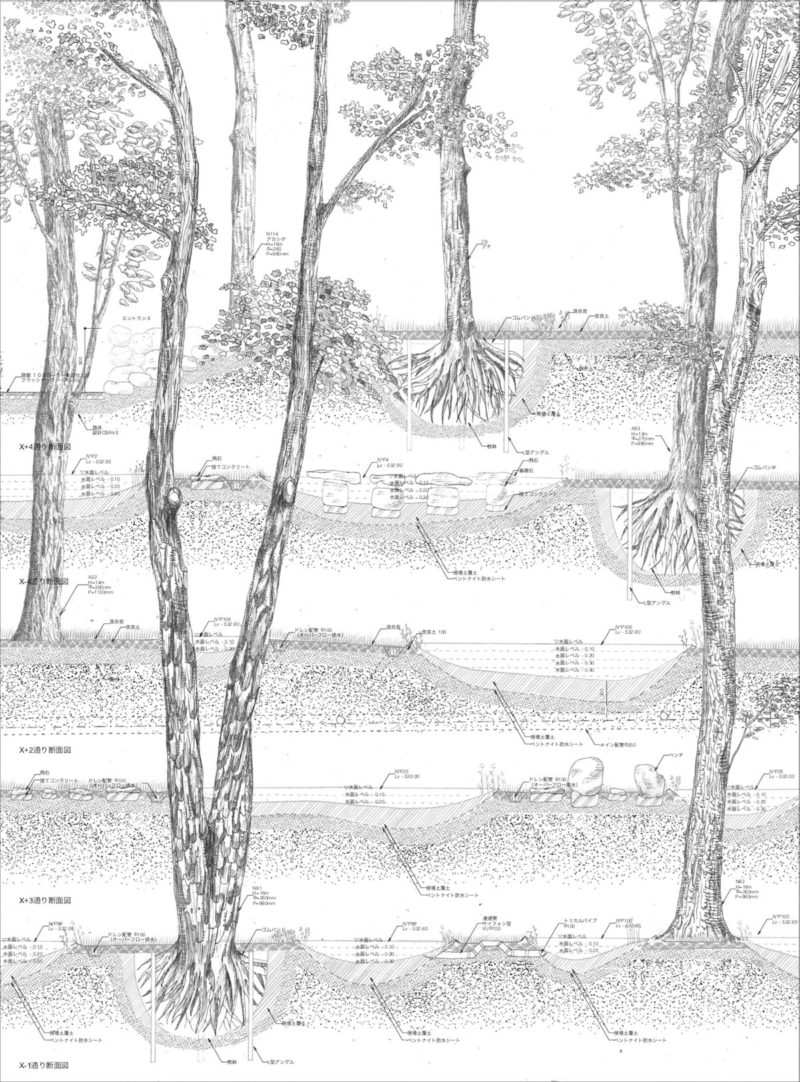
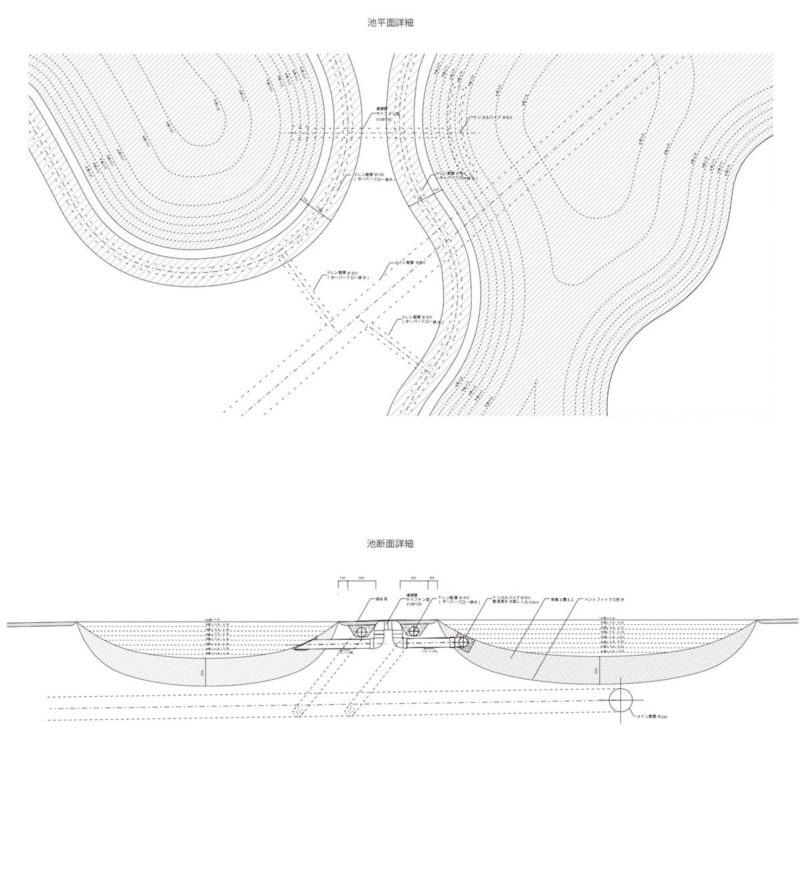
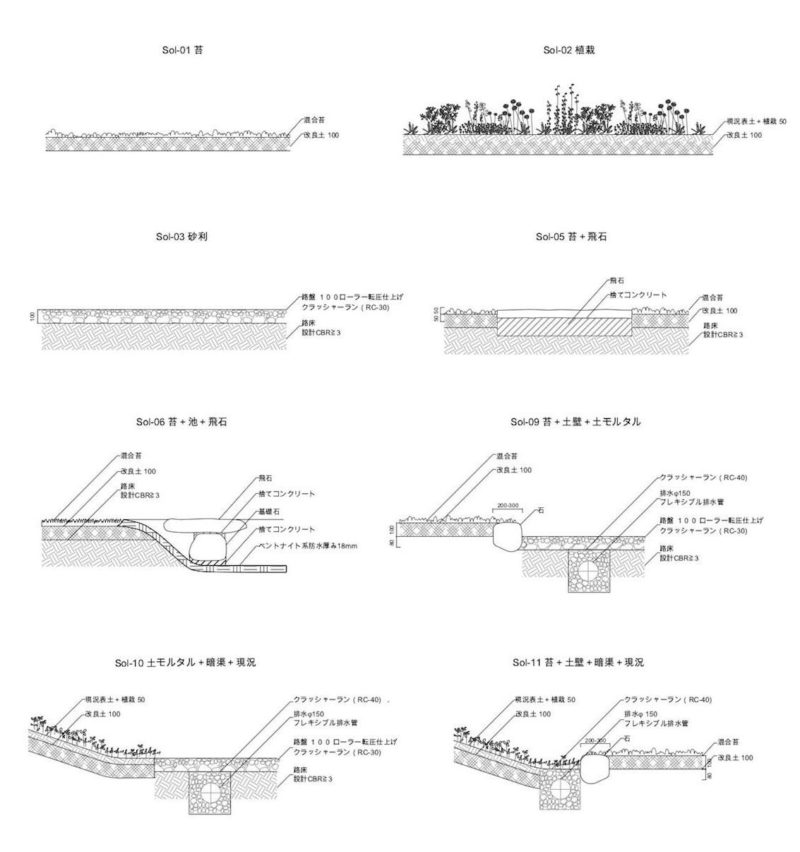
Conclusion
Martha Schwartz of the US landscaping company Martha Schwartz added,
Ishigami’s architecture is the architecture of space, not of the object. He discards the idea of architecture as a built, utilitarian structure by reversing the business-as-usual process, which is: building first, landscaping second – if at all. Instead, with the project ‘Water Garden’ Ishigami leaves us wondering is this architecture, landscape architecture, or art.
In his projects, including Water Garden, Ishigami demonstrates an excellent ability to perceive his practice as being beyond the boundaries of the architecture domain of thinking.
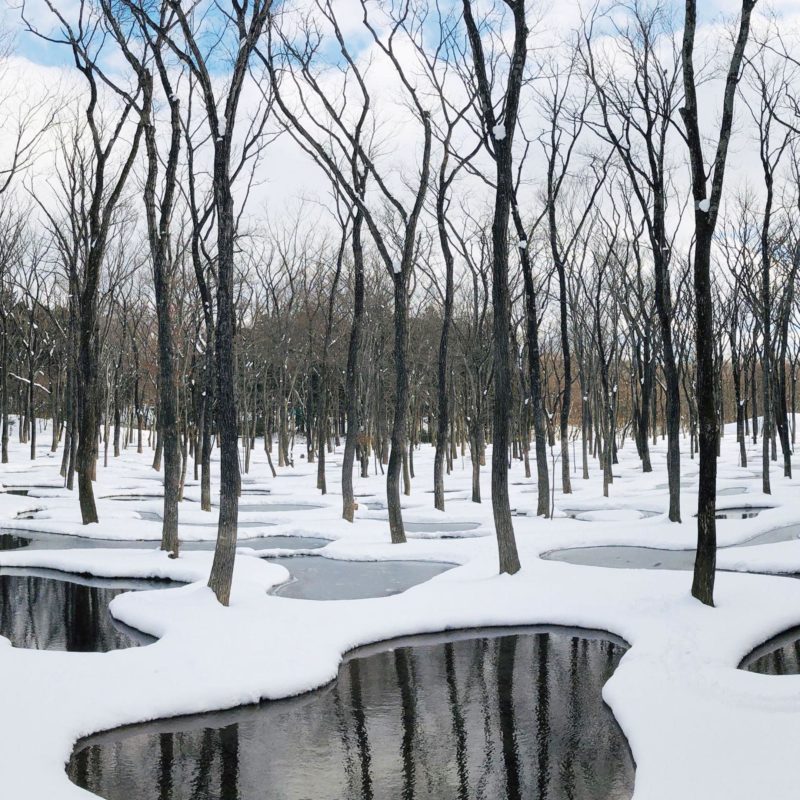
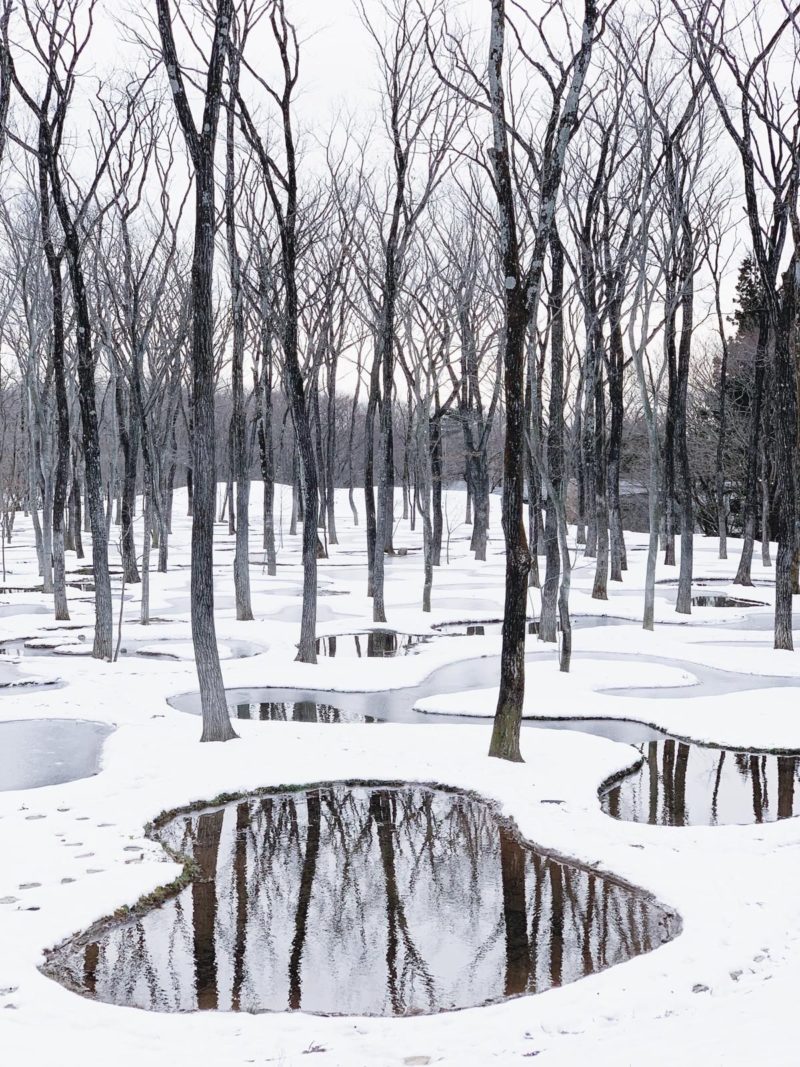
Explore nearby
Nasu Mountains, Tochigi Prefecture, Japan
 Fumiko Hori's mural44 km away
Fumiko Hori's mural44 km away The abandoned animals of FukushimaPhoto documentation (2012)87 km away
The abandoned animals of FukushimaPhoto documentation (2012)87 km away Katsuhiro Otomo’s manga mural146 km away
Katsuhiro Otomo’s manga mural146 km away Osamu Tezuka's ceramic relief152 km away
Osamu Tezuka's ceramic relief152 km away Louise Bourgeois' Maman157 km away
Louise Bourgeois' Maman157 km away
